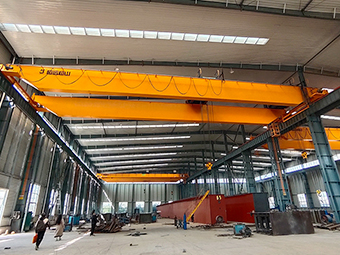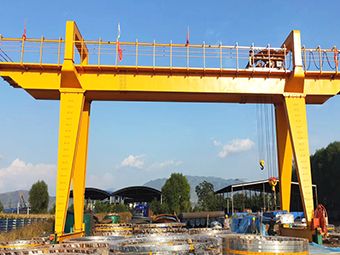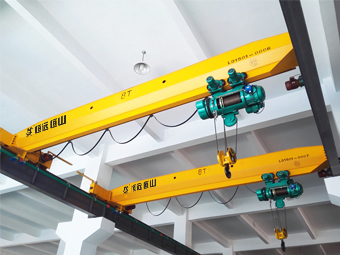What is the difference between a bridge crane and a gantry crane?
A bridge crane and a gantry crane are both types of overhead cranes used for lifting and moving heavy loads. The main difference between the two lies in their design and how they are supported.
A bridge crane, also known as an overhead crane, is typically supported by a pair of parallel runways or rails installed on elevated beams. The crane moves along the rails using a trolley, which enables it to access different areas of the workspace. The trolley can move horizontally, and the bridge, which holds the hoist and other lifting equipment, can move along the length of the rails.
On the other hand, a gantry crane is supported by legs or uprights on the ground, forming a large A-shape or H-shape structure. These legs or uprights support a horizontal beam, which holds the hoist and other lifting components. Gantry cranes can also move along a set of rails, similar to bridge cranes, but their mobility is not limited to a fixed runway system. This makes gantry cranes more suitable for outdoor operations or situations where a fixed runway is not feasible.
In summary, a bridge crane is supported by overhead runways and has a trolley and bridge to move horizontally, while a gantry crane is supported by legs or uprights on the ground and can move along a set of rails as well.

.jpg)
A bridge crane, also known as an overhead crane, is typically supported by a pair of parallel runways or rails installed on elevated beams. The crane moves along the rails using a trolley, which enables it to access different areas of the workspace. The trolley can move horizontally, and the bridge, which holds the hoist and other lifting equipment, can move along the length of the rails.
On the other hand, a gantry crane is supported by legs or uprights on the ground, forming a large A-shape or H-shape structure. These legs or uprights support a horizontal beam, which holds the hoist and other lifting components. Gantry cranes can also move along a set of rails, similar to bridge cranes, but their mobility is not limited to a fixed runway system. This makes gantry cranes more suitable for outdoor operations or situations where a fixed runway is not feasible.
In summary, a bridge crane is supported by overhead runways and has a trolley and bridge to move horizontally, while a gantry crane is supported by legs or uprights on the ground and can move along a set of rails as well.

.jpg)
related article
> How to Choose a Gantry Crane
> 60 ton Container Gantry Crane Project in Philippines
> The electric transfer cart ordered by Russian customers has been shipped
> Crane Installation Services
> A 10-ton single-girder bridge crane customized for a building materials factory in Uzbekistan.
> Customized QD Double Girder Bridge Crane for Nepalese Client
> launching gantry crane
> the advantages of variable frequency drives (vfds)









.jpg)





